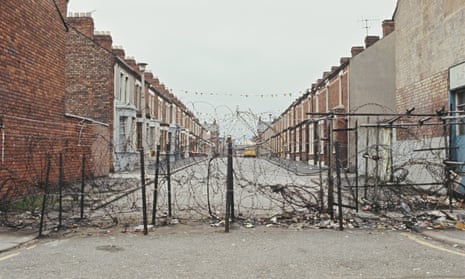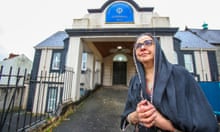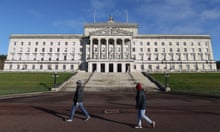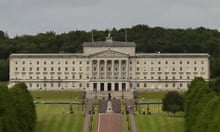You enter this exhibition through a wire mesh structure as you might enter a high-security zone or a prison or, had you grown up in Northern Ireland during the most violent years of the Troubles, how you might once have entered a city centre pub. As curatorial statements of intent go, it’s a bold one, immediately establishing the sense that Northern Ireland was a place apart: confined, oppressive, defined by a collective state of alert mixed with dread.
As its title suggests, Northern Ireland: Living With the Troubles is a bold attempt to reflect the experience of the 30-year conflict through the often conflicting perspectives of those caught up in it. It is unfortunate timing that it coincides with the BBC’s five-part oral history series, Once Upon a Time in Northern Ireland, which delves much deeper into similar terrain. In contrast, this exhibition falls somewhere between A Beginner’s Guide to the Troubles and a conceptual installation that attempts to evoke something of the tense, uneasy atmosphere of the time, as well as the clash of ideologues and identities that for so long made the conflict seem intractable. It almost succeeds in both aims.
It begins with a historical video that provides much needed context for the curious casual visitor for whom the Troubles were something that happened over there – in a place utterly apart, despite Margaret Thatcher’s ludicrous insistence that Northern Ireland was as British as Finchley. The exhibition comprises four installations housed in relatively small, intensely atmospheric spaces, three of which revisit a pivotal moment in the Troubles from different, often conflicting, perspectives.
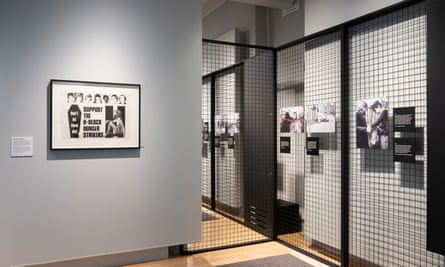
In the first, The Night of the 27-28 June 1970, a background soundtrack – crowds, gunfire, conversation – immediately ups the atmosphere a notch as you negotiate the photographs, projections, wall texts and political ephemera therein. Here, a single outbreak of violence that occurred in the early years of the Troubles, at the interface between the loyalist Newtownards Road and the republican Short Strand, is recounted by two voices, one from each neighbourhood. The narratives, unsurprisingly, differ as to who was to blame, who attacked and who defended, but the cold hard facts are that three people died in the ensuing gun battle.
The second room traces “The Descent into Violence” in the 1970s, using a wider range of oral testimonies from ex-paramilitaries from both sides as well as members of the Royal Ulster Constabulary and the Ulster Defence Regiment. Flags, emblems and badges from all sides attest to the sense of a place sliding inexorably into war and militarism. An embroidered handkerchief created in Long Kesh prison camp honours Ulster Volunteer Force members as prisoners of war. Elsewhere, a single rubber bullet attests to the fact that, by the early 1970s, rioting had become a deadly business: 17 people died from injuries from rubber and plastic bullets, eight of them children. One woman recalls how checkpoints and bomb scares were commonplace: “It was just my normal.”

The normalisation of violence and repression is one of the aspects of the Troubles that deserves an exhibition of its own, but is here addressed in the third room, dramatically titled Hell in a Wee Place – a reworking of a quote by a French soldier serving in Vietnam in 1954. For someone such as myself, who grew up in the town of Armagh through the early years of the Troubles, it is the recorded voices of ordinary people caught up in the conflict that evoke most powerfully how it felt back then to live in a place defined and disrupted by the bombings and the gun battles, but also the roadblocks, checkpoints, foot patrols, constant stop-and-search operations and the stringent security measures that ringed entire city centres with reinforced concrete and steel fences and gates.
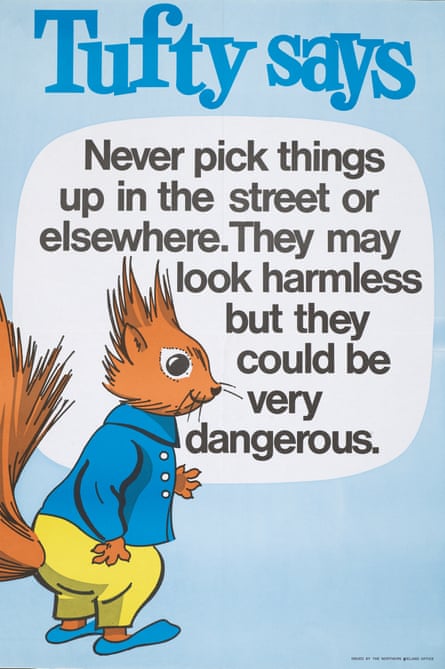
One image shows a not untypical scene of a woman having her shopping bag searched by member of the Women’s Royal Army Corps. Another is of a sign outside an army checkpoint that reads, “Our job is your security: help us to help you”. The sign bears the scars of a sniper’s bullets. More surreal still is a public information poster featuring Tufty, a squirrel who taught UK children road safety in the 1970s, but was also used in Northern Ireland to warn them of the dangers of picking up objects that “may look harmless but could be very dangerous”.
The final room, Today and the Future, provides a kind of breather: a contemporary thread of younger voices that, though calmer, do not leave one feeling confident about Northern Ireland’s future. As shifting demographics and the surge in popularity of Sinn Féin on both side of the border make clear, a unified Ireland is beginning to look like an inevitability. For every tentatively hopeful voice included here, there were several others urging caution and even warning of threat. As images of present-day Belfast and Derry unfold on a big screen, the testimonies tend towards the downbeat. “There’s been no reconciliation. There’s still division.” “Anyone who thinks we’re normal, need to look again.” “We don’t trust each other. We are not at peace.” “If we get a united Ireland, it won’t solve the problem of sectarian division.”
Perhaps unsurprisingly, I left the exhibition feeling unsettled, but for the wrong reasons. There is both a lot, and not nearly enough, information on display here: an overload that sometimes confuses the issues as much as it clarifies them. In attempting to frame the conflict in certain historical moments, a sense of continuity is lost and, as a result, the complexity of the Troubles becomes confusing. Amid the photographs and ephemera, the voices stay with you, but they too only evoke a glimpse of the lived experience of the Troubles and the long shadow of a conflict that still determines to varying degrees the lives of those who lived through it and those who grapple with its complex afterlife.
